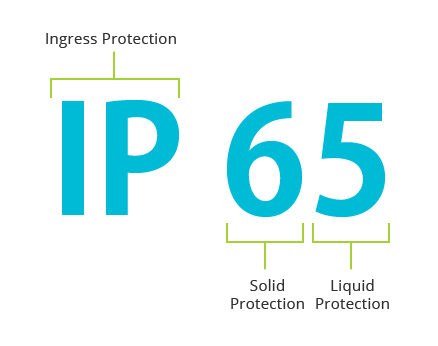|
|
|
|
|
Understanding Waterproof IP Ratings: IP44, IP54, IP55, IP65, IP66, IPX4, IPX5, IPX7 |
From: BONAD Date: 2024-08-20 17:10:33 |
|
The Ultimate Guide to Understanding Waterproof IP Ratings: IP44, IP54, IP55, IP65, IP66, IPX4, IPX5, IPX7
Have you ever noticed markings like IP44, IP54, or IP55 on products or their packaging? These codes represent the product's protection level against the intrusion of solid objects and liquids. In this guide, we'll break down what these codes mean and explain the various protection levels in detail.
What is an IP Rating?
IP Rating stands for Ingress Protection Rating (also known as International Protection Marking). This code indicates whether a product is protected against the ingress of solid particles and liquids. The numeric rating helps consumers understand how to care for their products and store them properly. While manufacturers often provide complex details about their products, an easy-to-understand IP Rating can be more helpful for consumers. This transparent system allows anyone to purchase higher-quality products without being confused by technical jargon.
The Ingress Protection standard is recognized globally and specifies the capabilities of a product's casing—from water resistance to protection against solid objects. The code consists of the letters "IP" followed by two digits or an "X." The first digit represents resistance to solid objects, while the second digit indicates protection against liquids. An "X" means that the product has not been tested for that specific category (either solids or liquids).
Protection Against Solid Objects
Solid object protection refers to preventing access to hazardous parts inside an electronic product. The scale ranges from 0 to 6, where 0 means no protection at all. A rating between 1 and 4 indicates protection against objects larger than 1mm, such as hands, fingers, small tools, or wires. For dust protection, a minimum rating of IP5X is recommended. Dust ingress can cause significant damage to electronics; thus, an IP6X rating provides maximum assurance.
This type of protection is also known as intrusion protection and is crucial for ensuring that electronic components resist contact with charged electricity over time.

Here’s a breakdown of solid object protection levels:
- 0: No protection assured.
- 1: Protection against objects over 50mm (e.g., hands).
- 2: Protection against objects over 12.5mm (e.g., fingers).
- 3: Protection against objects over 2.5mm (e.g., wires).
- 4: Protection against objects over 1mm (e.g., tools and small wires).
- 5: Protected against dust that could interfere with normal operation but not fully dust-tight.
- 6: Fully dust-tight and complete protection against solid objects.
Protection Against Liquids
Liquid ingress protection—or moisture protection—ranges from 0 to 8, with an additional recent addition of 9K. A rating of 0 means no protection from liquid particles entering the case. Waterproof products may not necessarily withstand prolonged submersion in water; even brief exposure can damage products with low IP Ratings.
You might see ratings like IPX4, IPX5, or IPX7 on some products. The "X" signifies that the product hasn't been tested for dust ingress but may still offer good water resistance.
The highest rating, 9K, refers to products that can withstand steam cleaning and high-pressure water jets from any direction.
Here’s a breakdown of liquid ingress protection levels:
- 0: No protection assured.
- 1: Protection against vertical drops of water.
- 2: Protection against vertical drops when tilted up to 15°.
- 3: Protection against direct sprays up to 60°.
- 4: Protection against water splashing from any angle.
- 5: Protection against water jets projected by a nozzle (6.3mm) from any angle.
- 6: Protection against powerful water jets projected by a nozzle (12.5mm) from any angle.
- 7: Protection during immersion at depths between 15cm and 1 meter for up to 30 minutes.
- 8: Protection during long-term immersion at depths over 1 meter.
- 9K: Protection against high-pressure water jets and steam cleaning.
Commonly Seen IP Ratings Explained
IP44
Products with an IP44 rating are protected against solid objects larger than 1mm and splashes of water from all directions.
IP54
An IP54-rated product is protected enough to prevent dust ingress from affecting normal operation but is not entirely dust-tight. It also protects against splashes of water from any angle.
IP55
Products rated at IP55 are protected enough to prevent harmful dust ingress but are not fully dust-tight. They are also protected from water jets projected by a nozzle (6.3mm) from any direction.
IP65
A product with an IP65 rating is fully dust-tight and protected from solid objects as well as water jets projected by a nozzle (6.3mm) from any angle.
IP66
An IP66-rated product offers full dust-tightness and solid object protection along with defense against powerful water jets projected by a nozzle (12.5mm) from any direction.
IPX4
Products with an IPX4 rating are protected from splashes of water coming from any angle.
IPX5
An item rated at IPX5 is safeguarded against water jets projected by a nozzle (6.3mm) from any direction.
IPX7
A product with an IPX7 rating can be submerged in water for up to 30 minutes at depths between 15cm and one meter.
Understanding these ratings can help you make informed decisions about which products will best meet your needs in various environments—whether you're concerned about dust in your workspace or potential water exposure during outdoor activities. |
| |
|
|
|
|
|

